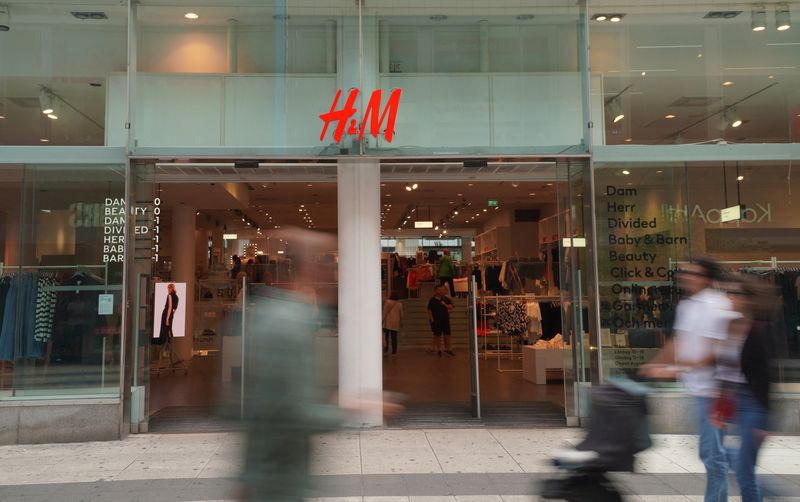Investing.com’s stocks of the week
By Helen Reid
LONDON (Reuters) - Investors will be looking for reassurances from new H&M (ST:HMb) CEO Daniel Erver that he has the right plan to reboot revenue growth when the fast fashion retailer reports its first quarterly earnings under his leadership on Wednesday.
Erver took the helm in January after his predecessor Helena Helmersson stepped down unexpectedly on the day of H&M's annual results, unsettling investors. H&M shares are still down 10% from where they stood before that.
The retailer has struggled to keep pace with bigger rivals such as Zara owner Inditex (BME:ITX), whose shares hit a record high last week, while China-founded fast-fashion firm Shein is also expanding rapidly in Europe.
"The consumer space remains very polarised," said Dora Buckulcikova, lead portfolio manager of Dutch asset manager Robeco's fashion equity strategy.
"We have been quite surprised by just how strong demand for certain brands has been, but others in the middle market are getting squeezed."
H&M, which sells dresses for $9.99 and jeans for as little as $17.99, but is also stretching into higher price points with its brands Cos and Arket, is expected to report its weakest quarterly sales in two years on Wednesday.
Revenue is expected to drop to 53.4 billion Swedish crowns ($5 billion) from 54.9 billion a year earlier, LSEG analyst estimates show. Operating profit is expected to double to 1.422 billion crowns.
H&M says it is prioritising profitability over sales volumes as it aims to reach a 10% operating margin this year.
Still, the retailer is stepping up investment in its stores and logistics, announcing in January that capital expenditure would increase by up to 30% this year to 11-12 billion crowns.
H&M needs to follow Inditex's lead and invest in improving its store network and logistics, even if that weighs on its profit margin short-term, said Nick Clay, portfolio manager at Redwheel in London. Clay previously held H&M in his fund, but switched to Inditex in May 2022.
SQUEEZED MIDDLE
Improving the look and feel of stores is one way H&M can attract more aspirational shoppers, experts say. In a store H&M opened last week on the King's Road in London, the layout is more spacious, the range more curated and the changing rooms more comfortable than a typical H&M.
Investors will also be looking for Erver to detail plans to "near shore" and improve H&M's logistics.
The speed with which companies in the sector respond to consumer behaviour is a key differentiator, said Olivier van Hirtum, head of developed market equities at APG Asset Management in Amsterdam.
"Companies that have shorter supply chains – both physically, and in time – can respond faster to fashion trends, and we've seen them take share from companies that take longer," he said.
H&M is taking measures to improve collections, time to market, and inventory geographic allocations, which should drive improvements in its top-line growth and, by extension, profitability, said Magnus Raman, analyst at Kepler Cheuvreux in Stockholm.
H&M has also been closing stores in recent years. At the end of its 2023 financial year it had 700 fewer stores than in 2019, a decline of 14%.
H&M's cash position of 26.398 billion crowns, or around $2.5 billion, was up 22% from a year earlier, though still small compared to Inditex's 11.4 billion euro ($12.34 billion) cash pile.
($1 = 0.9238 euros)
